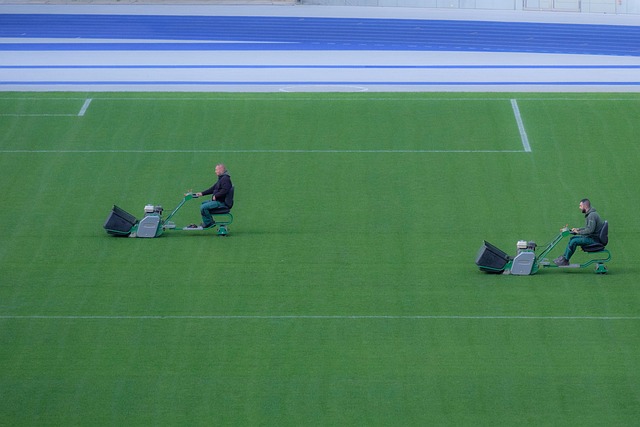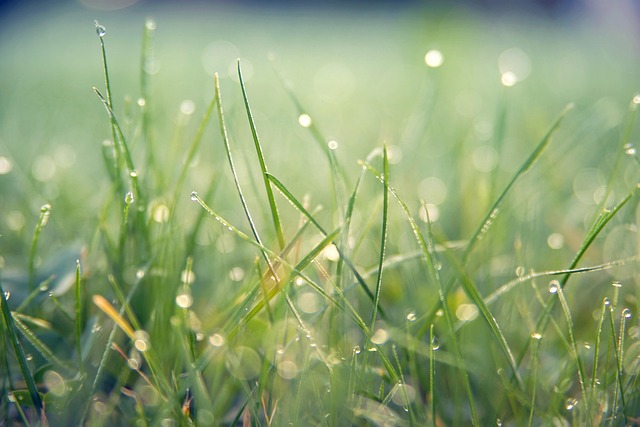Assess lawn water needs based on grass type, climate, and soil conditions for efficient Lawn Care and Landscaping. Choose sprinkler or drip irrigation systems tailored to property size, soil type, and climate. Strategically design and maintain systems to minimize waste, conserve water, and promote lush landscapes.
Looking to transform your lawn from parched to vibrant? Irrigation system installation is a game-changer for any lawn care and landscaping routine. This comprehensive guide breaks down everything you need to know, from understanding your lawn’s unique water needs to selecting the perfect irrigation system for your space. Discover efficient installation and maintenance tips that will ensure optimal performance and help you achieve a lush, thriving yard all year round.
- Understanding Your Lawn's Water Needs
- Choosing the Right Irrigation System
- Efficient Installation and Maintenance Tips
Understanding Your Lawn's Water Needs

Before installing an irrigation system, it’s crucial to understand your lawn’s specific water needs. Lawn care and landscaping professionals often recommend assessing your grass type, climate, and soil conditions. Different grasses have varying water requirements, with some needing more frequent but shallow watering, while others tolerate deeper but less frequent irrigation. Climate also plays a significant role; regions with hot, dry summers require more extensive watering schedules compared to milder environments.
Moreover, soil composition significantly impacts water absorption and retention. Sandy soils, for instance, drain quickly, necessitating more frequent but shorter waterings to prevent water stress. Conversely, clay-rich soils can hold moisture for longer periods, allowing for less frequent but thorough irrigations. Understanding these factors ensures an efficient irrigation system tailored to your lawn’s precise water needs.
Choosing the Right Irrigation System

Choosing the right irrigation system is a crucial step in any lawn care and landscaping project. It depends on several factors, including your property’s size, soil type, and climate. For smaller, evenly shaped yards with good soil drainage, a sprinkler system might be ideal. These systems efficiently water large areas while minimizing waste by spraying water directly onto the ground.
On the other hand, drip irrigation is a better option for larger properties or those with diverse terrain and challenging soil conditions. It delivers water slowly and directly to plant roots, ensuring maximum absorption and minimal evaporation. Both options enhance the health of your lawn and landscaping while promoting water conservation, an increasingly important consideration in today’s world.
Efficient Installation and Maintenance Tips

When installing an irrigation system, efficiency is key for effective lawn care and landscaping. Begin by assessing your property’s unique needs—considering factors like soil type, slope, and existing vegetation. This evaluation ensures water distribution optimized for every corner of your yard, minimizing waste and maximizing results. A strategic design prevents over-saturating certain areas, which can lead to water runoff and evaporation losses.
Regular maintenance is equally vital for sustained efficiency. Schedule routine inspections to check for leaks, clogged emitters, or damaged components. Promptly addressing issues ensures optimal system performance throughout the year. Implement a consistent care routine, including cleaning filters and adjusting timers based on seasonal changes in plant growth and weather patterns. By prioritizing these practices, you’ll not only enhance water conservation but also contribute to the overall health and vibrancy of your lawn and landscaping.
Irrigation system installation is a strategic investment in your lawn care and landscaping. By understanding your lawn’s water needs, selecting the appropriate system, and implementing efficient installation and maintenance practices, you can ensure a lush, vibrant outdoor space that requires less manual effort. Embracing these tips allows for sustainable water usage, enhancing both the aesthetics and long-term health of your lawn.
